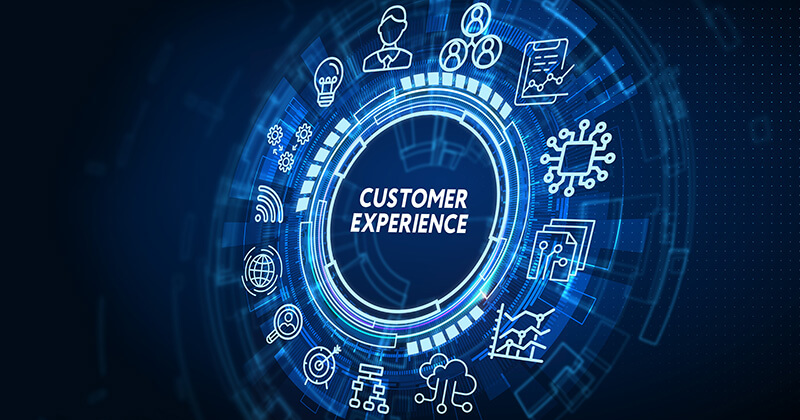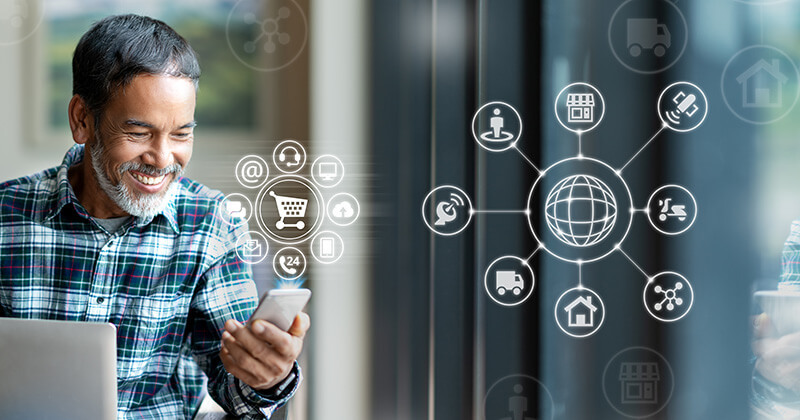Listen360
10 Oct 2024
Top Features to Look for in Customer Experience Software for Growing Businesses
Your customers are the heart of your business. Without them, you couldn’t continue to do what you do.
It makes sense, then, to invest in their experience. A better customer experience differentiates you from your competition. It increases loyalty and reduces churn.
But the customer experience is multifaceted. There are so many moving parts, interactions, and touchpoints that can be optimized throughout the journey. Where do you start? How can you possibly manage it all?
The answer—customer experience software.
In this guide, we’ll give you a solid understanding of customer experience software. Then, we’ll explain its power and benefits.
We’ll list the top eight features to look for before kick-starting your adoption with a few quick tips.
By the end, you’ll know whether customer experience software is the key to unlocking your next chapter of growth. So let’s get started!
Understanding Customer Experience Software
You have software to manage your finances and scheduling. You have software to make sure your bills are paid on time. You might even use software to automatically post to social media.
So why not use software to improve the customer experience? After all, a “strategy focused on improving the experience of existing customers can deliver breakthrough growth,” according to McKinsey & Company.
In fact, companies that focus on experience grow up to two times faster than their peers.
So what exactly does customer experience software do? Put simply, it helps you manage all your interactions with the people you serve.
It streamlines support processes and marketing. It makes communicating with your client base easy and consistent across all channels
Some software solutions also have systems in place that collect and analyze feedback. You can use these practical, data-backed insights to make meaningful improvements.
The result?
- Higher-quality, more personalized services
- A boost to satisfaction and loyalty
- Enhanced customer retention—that is, the number of customers who choose to do business with you again
- The ability to achieve all of the above with minimal extra effort
Together, these outcomes fuel your growth. Not just today but for months and years to come.
FROM ONE OF OUR PARTNERS: Improve Your Business with a CSAT Survey Questionnaire
The Power of Customer Experience Software
An investment in improving the customer experience is not only smart—it’s also critical.
In today’s everything-now culture, customer expectations are higher than ever. Cheap pricing isn’t the be-all and end-all. Nor is the quality of work.
Instead, they want to feel like the experience was made just for them. Achieve this, and you’ll build a “stronger emotional connection” with each customer.
According to leading global consultancy Simon-Kucher:
“This approach not only sets a company apart in the market but also fosters deeper customer loyalty and satisfaction.”
Customer loyalty and satisfaction are two key pillars of growth and success. Customer experience software is your ticket to getting there faster with fewer resources.
Higher Customer Lifetime Value (CLV)
Customer Lifetime Value (CLV) measures how much a customer spends with your business over your relationship.
The longer a customer does business with you, the higher the CLV will likely be. The higher your average CLV, the better.
How does customer experience software help?
More than half of people switch to competing businesses after one poor experience. Not two or three. One.
Every single interaction counts. There’s zero room for error.
Customer experience software reduces the likelihood of mistakes or misunderstandings. It locks in the fundamentals, like fast response times and ongoing communication.
In short, it improves the customer experience. This boosts loyalty, and loyalty uplifts your average CLV. Your customers win—and so does your bottom line.
Increased Customer Engagement
Another important part of inspiring loyalty is customer engagement. This is a measure of how much existing customers interact with your brand.
- Did they do business with you once and then never look at your website again? This customer is not engaged.
- Did they do business with you and then subscribe to the newsletter? Do they open every email you send? Did they even follow your Facebook page? This customer is engaged.
You want to keep as many customers engaged as possible. An engaged customer knows your business exists. You are top-of-mind.
The next time they need the services you offer, they think of you first. They don’t even have to search on Google or ask a friend. Staying loyal to you is a no-brainer.
Customer experience software helps you engage customers in a whole host of ways, including:
- Personalized messaging
- Real-time support
- Feedback collection and analysis
- Consistent cross-platform interaction
- Automation
RELATED ARTICLE: How to Choose a Customer Engagement Platform
Better Crisis Management
You can do everything in your power to avoid it, but chances are, things will still go wrong. When they do, how you respond speaks volumes. And it’s your customers who are listening.
Say someone has an issue with your business. With customer experience software, you have the information on hand to deliver a prompt and personalized solution.
For example:
- If a customer misses a scheduled service, the software will alert you. It will provide options to reschedule right away. You can offer a convenient time that suits their life.
- If someone is unhappy with the quality of service, the software gives you a detailed history. This will include things like their last visit, services they received, and any past problems. This allows you to offer a tailored solution, like a free follow-up or a discount on their next visit.

More Personalized Experiences
Personalized experiences are great, but they rely on you knowing the person. Who are they? What do they need? What are their challenges?
Customer experience software tracks all the important details for you. It captures personal preferences, service history, and even communication habits. This helps you create experiences that feel unique to each customer.
For example, you might recommend related services or follow-up treatments. You can make sure all communications are delivered in the way they prefer.
Increased Likelihood of Reviews and Referrals
Happy customers are your best advertisers. They promote your business in two powerful ways—reviews and referrals.
- Reviews matter because they build trust. Positive reviews boost your online reputation (and SEO) and attract new customers.
- Referrals matter because they bring in loyal customers. Personal recommendations are more trusted than ads. When a customer refers your business, the new customer is likely to stick around longer.
Customer experience software makes sure your customers always feel heard and valued. Their perception of your business improves. This means they are more likely to leave a positive review.
Plus, if someone asks for a referral, it’s your business that comes to mind.
More Meaningful and Consistent Communication
Consistent communication contributes to a strong brand identity. Your brand voice needs to be professional, clear, and consistent across all locations. This builds trust and helps customers recognize your business.
But communication should also be meaningful. It’s not enough just to send generic messages or canned responses. Customers expect real, personalized replies that relate to their concerns.
Customer experience software helps you:
- Track customer preferences to personalize communication
- Send automated but meaningful follow-ups
- Deliver consistent messaging across multiple locations
- Provide detailed customer histories to avoid generic answers
FROM ONE OF OUR PARTNERS: The Best CRM Software Options for Home Services Businesses
Top Features to Look for in Customer Experience Software
These benefits don’t just sound good. They could revolutionize your business, and you’re now officially in the market for a software solution.
Look for these top features:
- Omnichannel support: This gives you the ability to communicate with customers across channels. That might be email and live chat. Or it could be social media and phone calls.
- Detailed analytics and insightful reporting: Data is powerful. But data alone tells you nothing useful at all. You need context. You need meaning. So look for software that collects data and compiles it into practical reports. That way, you can make moves to improve the experience rather than staring at seemingly random numbers on a page.
- Automation features: It might sound counterintuitive. How can you automate the customer experience while making sure it’s personalized? With the right strategy, it’s possible. Look for the capability to send automated updates about the customer’s service. Notifications like payment reminders and scheduling changes are helpful too.
- Seamless integration: This means the software will slot effortlessly into your existing system. Each software solution can send and receive data. There’s no need for manual entry, which is prone to human error. You get a full, 360-degree picture of your customers.
- Feedback mechanisms: These make it easy to collect and examine customer feedback. For example, the software might have a built-in customer satisfaction survey. You can send this to customers after they receive their service. Then, you can use the feedback to improve your operations continually.
- Customer segmentation: This lets you divide your customers into groups with like characteristics. You might have one segment of residential customers and another of commercial customers. You can use these segments to make sure all communications are relevant.
- Scalability: Is growth on the cards for your business? If so, look for a solution that can evolve and grow alongside you.
- Strong security: Customer experience software is packed full of valuable data. This puts it at risk of a cyberattack. Check that the software has robust security measures like encryption.
RELATED ARTICLE: Connect with Your Customers Using Customer Experience Services

How You Can Get Started with Customer Experience Software Right Now
Keen to get started with customer experience software today? Begin with these four steps:
- Think about your needs. What features are most important to you? Where are the gaps in your current customer experience strategy? Jot down some goals you’d like to achieve with your new software.
- Choose your must-have features. Using the needs and goals identified in step one, select three to five features you can’t live without. These will help you find the right solution.
- Research software and read reviews. Next, jump online and start searching. Look for a solution that has the features you’ve identified. Make sure it’s within your budget too.
- Schedule demos. Most providers will let you see the software in action before you buy it. Schedule two or more demos with options that look promising. From there, you should have a good idea of which is best for your business.

Increase Repeat Customers & Reduce Customer Churn
Leading the market means delivering an exceptional customer experience. With Listen360, you can achieve this effortlessly. We’ll show your team how to earn loyal customers, stand out in your industry, and drive growth.


